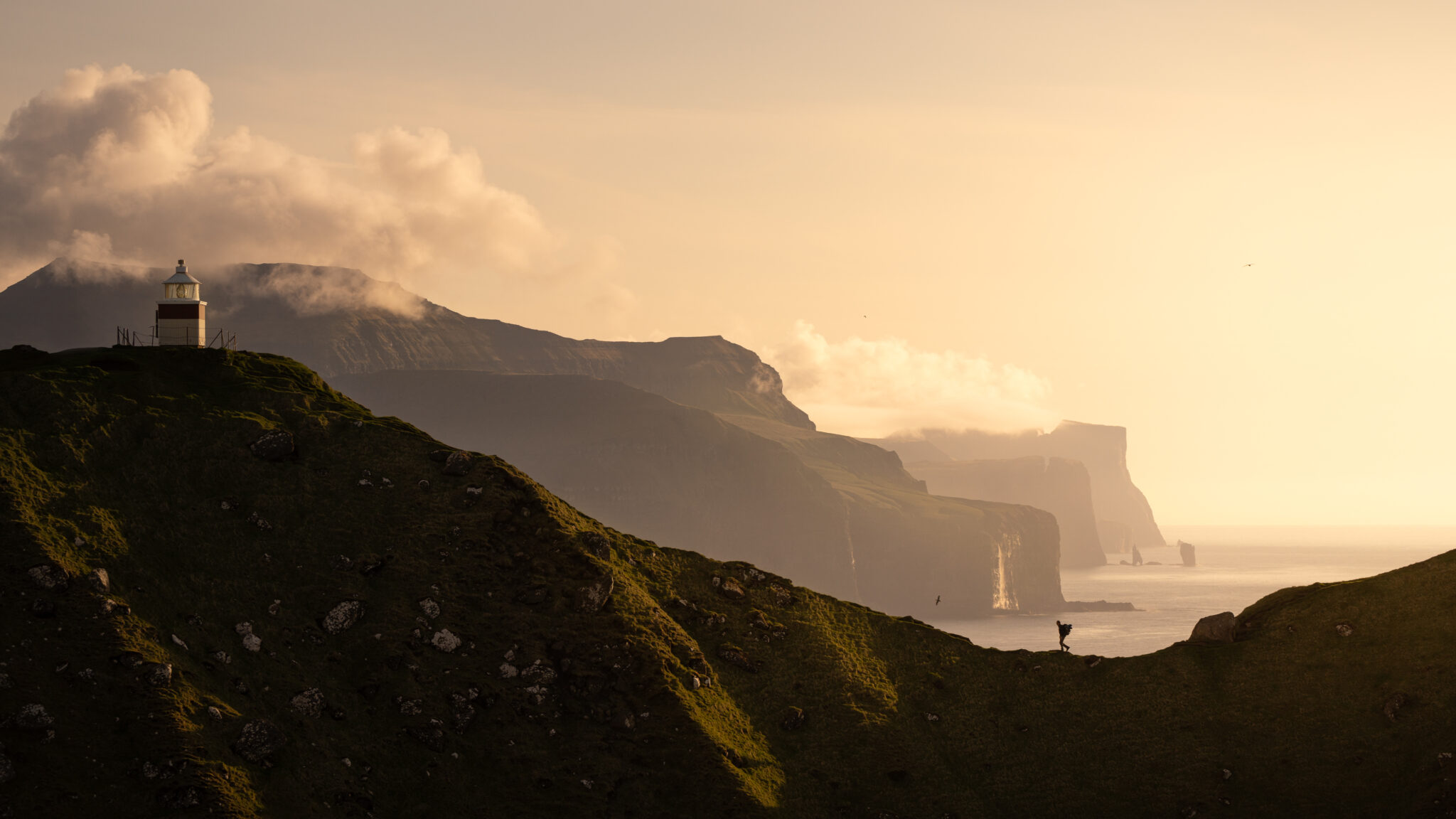
You can find the VLOG to the BLOG below, at the end of the blog post. Be sure to take a look, because in this YouTube video you can find out how I took the pictures in this post and all the tips in detail directly in the field.
Gear:
Sony a7IV
Sony FE 2.8/16–35 mm GM
Sony FE 4/24–105 mm G OSS
Sony FE 100–400 mm GM
I already have the first picture in the box. A wonderful shot of the typical wooden jetty on Sylt in the dunes. With great cloud structures, which are created thanks to the storm and also change within seconds.
I had seen the rain coming over the sea. It’s still a few kilometres away, so go ahead and take some pictures. Trying out compositions. Then it pelted down on my jacket. Seconds later, it felt like the rain was coming from all sides. The only thing I could do was look for a sheltered spot and wait. 5 minutes later, the rain was over. But the wind was blowing harder. At least it dried my clothes again quickly.
The adversities that such a storm brings with it must be accepted in landscape photography, because there are just as many possibilities in such situations. Constantly changing light conditions, breaking clouds that let light through, dramatic cloud structures that leave an impressive impression on pictures, moody rain atmospheres and possibly rainbows, to name just a few. Everything that can make a picture look special.
I walked between the dunes. On the paths, of course. On the horizon, I could see the next rain cell approaching. I quickly had to find some kind of foreground that wasn’t too disturbed. But it also had to be somewhat aesthetic. Photographing a foreground just to have a foreground doesn’t make sense either. The picture might end up hanging on my wall. If I spend ages thinking about the foreground, that I could have left it out, then I would replace the picture after a few weeks at the latest.
Then the sky opened up behind me. The storm blew the clouds aside and let the sun through. The rainbow appeared directly in front of me over the North Sea. It grew quickly. I took a test shot and found a composition that offered a little more. A quick shot. But the rainbow continued to grow until it was complete.
I threw the rucksack on the floor. The 24 mm that my lens gives on the camera is not enough. I need my 16–35 and the first drops landed on my face. I changed the lens as quickly as I could. Went into position. 16mm. Camera settings fit. I pressed the shutter release. Then the rain came down on me. I had one shot and this is the result:

This and all other shots of this post you can request under “Prints” as an art print for your wall at home directly from me.
Wow. I thought. Adrenalin shot through my body, but I had kept calm enough to capture this brief moment. A few minutes later, when the downpour was over, I was able to see on the camera that it had worked. Experience and a certain routine in handling my own equipment were the key at this moment. Making settings, finding the composition, setting the focus in fractions of a second. Blindly finding your way around the camera. That’s what makes pictures like this.
Which camera or which lens was used is of secondary importance. The photographer takes the picture. The camera and lens are just the tools. Just as the pot and the cooker are the tools of the master chef. Nobody would think to ask which pot they used when enjoying their meal, would they?
Unfortunately, it was the only complete rainbow that morning. Later, I was able to photograph another rainbow over the Red Cliff near Kampen, a double one in fact, which appeared just at the right moment as I was standing on the sandy beach below. But there were other things that I thought were worth photographing. You can see what else I managed to photograph in the gallery and of course in the video below.
There are also a few things to bear in mind when photographing in the wind:
For more info and background on how I took this picture, be sure to check out the video on YouTube below!
In this gallery, I have compiled all the photos from the VLOG so that you can view them at your leisure. Have a look on Youtube and leave a comment or a like. If you liked the video, you can also subscribe to my channel so that you don’t miss any new videos.
The journey continues. The conditions for photography are brilliant. However, the wind speeds of up to over 100 km/h are really difficult to handle. In this VLOG, we give you some tips on how to cope with this and also some great pictures from the dune landscape around Kampen and Wenningstedt on Sylt. Have fun watching!